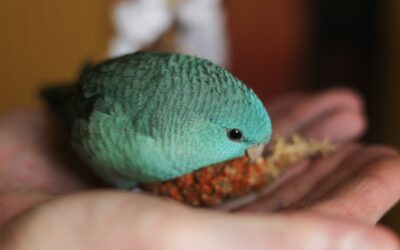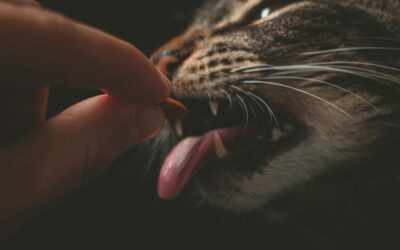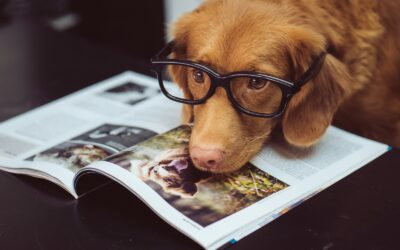Ever wondered what the world looks like through your dog’s eyes? So, what colors can dogs see?
Many dog owners imagine their furry friends see the world in full color, just like humans. However, dog vision is distinctly different. This blog post will explore the fascinating differences in how dogs perceive colors compared to humans, providing valuable insights for pet enthusiasts and animal lovers alike.
We’ll uncover the colors dogs can see, why they are often considered colorblind, and how their vision impacts their daily lives. By the end of this article, you’ll have a better understanding of your canine companion’s unique view of the world.

The Basics of Canine Vision
A dog’s color vision differs significantly from human vision. While humans have trichromatic vision, meaning we see the full spectrum of colors, dogs possess dichromatic vision. This means they only have two types of color receptors, or cones, in their eyes.
Dichromatic Vision Explained
Dogs’ dichromatic vision allows them to see blue and yellow hues. However, they struggle with reds and greens, which appear as shades of gray or brown. This is similar to red-green color blindness in humans. When a dog looks at a green lawn, it likely sees a dull, brownish expanse instead of vibrant green.
The Role of Rods and Cones
In addition to cones, dogs have a higher number of rod cells than humans. Rods are responsible for detecting light levels and motion, making them crucial for low-light and nighttime vision. This allows dogs to see better in dim light conditions, giving them an advantage during dawn and dusk.
Peripheral Vision of Dogs
Dogs also have a broader range of peripheral vision compared to humans. Their eyes are positioned more on the sides of their heads, granting them a wider field of view. This adaptation helps them detect motion from various angles, a crucial trait for their ancestors who relied on hunting for survival.

Colors Dogs Can See
The main colors dogs see typically are:
Blue
Dogs have a strong ability to see blue hues, making this color particularly noticeable to them. Dog toys, accessories, and training objects in shades of blue can stand out against the environment, catching your dog’s attention more effectively.
Yellow
Yellow is another color that dogs can easily distinguish. Items in yellow are visually stimulating for dogs, often appearing vibrant and engaging. Using yellow in your dog’s play areas or choosing yellow toys can enhance their playtime experience.
Shades of Gray
Though not a color in the traditional sense, shades of gray play a significant role in how dogs perceive their surroundings. Red and green objects, which dogs see as grayish hues, can appear dull compared to blue and yellow items. Understanding this aspect of their vision helps in selecting objects that are more likely to capture and hold their interest.
Ultraviolet Sensitivity
Interestingly, some studies suggest that dogs may have a degree of ultraviolet (UV) light sensitivity. While not as pronounced as in other animals, this trait could offer dogs an additional way to perceive their environment, especially in low-light or green light situations.

Human vs. Dog Perception of Colors
If you wonder what your dog sees compared to what you see, keep reading!
Red
Humans: The color red is often associated with emotions such as love and passion. Human eyes perceive red as a vibrant and warm color, commonly used to attract attention and convey urgency.
Dogs: Red appears as a dark brownish-gray to dogs. This means that a bright red toy will not stand out to a dog as it does to a human. To dogs, red is not a distinct color but rather a muted tone that blends with their surroundings.
Green
Humans: Green is a color that symbolizes nature, growth, and harmony. Human vision can differentiate between various shades of green, making it an essential color in daily life.
Dogs: For dogs, green looks similar to red, appearing as a nondescript gray or brown. This limited ability to see green means that green grass fields and green toys do not stand out in their visual landscape.
Blue
Humans: Blue is often associated with calmness and serenity. People can see the same range of blue shades, from the pale blue of a clear sky to the deep blue of the ocean.
Dogs: Dogs see blue very well. Blue items like a blue ball are highly visible to them and stand out sharply against other colors. Blue is one of the few colors that dogs see similarly to humans.
Yellow
Humans: Yellow is seen as a bright and cheerful color, often linked with sunshine and energy. Humans can easily identify various shades of yellow, from pale to golden hues.
Dogs: Yellow is another color that dogs can perceive quite well. Objects in yellow are clear and engaging to dogs, making yellow a good color choice for their toys and accessories.
Purple
Humans: Purple is often associated with royalty, luxury, and creativity. Human vision can detect a wide spectrum of purple shades, ranging from light lavender to rich violet.
Dogs: Purple appears very differently to dogs, likely as a shade of blue or gray. This limited perception makes purple toys and items less distinguishable in a dog’s eyes.
Orange
Humans: Orange evokes feelings of warmth and enthusiasm, sitting between red and yellow on the color spectrum. Humans can appreciate the rich variety of orange shades in nature and design.
Dogs: Orange, much like red and green, tends to blend into browner tones for dogs. This makes orange less attention-grabbing for dogs compared to blue or yellow.
By understanding these differences in color perception, you can make more informed choices in selecting items and creating environments that cater to your dog’s unique visual world.
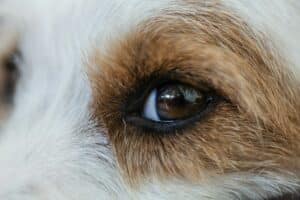
Visual Acuity and Depth Perception
Dogs’ visual acuity, or the sharpness of their vision, is generally poorer than that of humans. While humans can see fine details at a distance, dogs may see a somewhat blurred image. This is why dogs often rely on motion and detecting changes in light rather than fine details.
Depth Perception in Dogs
Depth perception is another area where dogs differ from humans. Due to their eye placement and overall vision structure, dogs have a more limited ability to judge distances accurately. They compensate for this with their keen sense of smell and hearing, which provide additional spatial information.
Detecting Movement
Despite their relatively poor visual acuity, dogs are experts at detecting motion. Their eyes are highly sensitive to movement, allowing them to notice even the slightest changes in their surroundings. This trait is a remnant of their hunting instincts and is crucial for identifying potential threats or prey.

Night Vision Superpowers
Dogs’ superior night vision is one of their most impressive traits. Thanks to their high rod cell count and a reflective layer behind their retinas called the tapetum lucidum, dogs can see well in low-light conditions. This adaptation enhances their ability to hunt and remain vigilant during nighttime.
The Tapetum Lucidum
The tapetum lucidum reflects light that passes through the retina back into the eye, effectively giving dogs a second chance to detect light. This structure not only improves night vision but also gives dogs their characteristic eye shine in low light.
Nighttime Navigation
With their enhanced night vision, dogs can navigate dark environments more effectively than humans. This ability is particularly useful for nocturnal activities and helps dogs remain active and alert during the night.

Practical Implications for Dog Owners
Here are some quick this to visually stimulate your dog:
Choosing the Right Toys
Understanding your dog’s color vision can help you choose toys that are more visually stimulating for them. Opt for blue and yellow toys, which will stand out clearly and keep your dog engaged. Avoid red and green toys, as they may appear dull or indistinguishable to your pet.
Improving Training Techniques
When training your dog, consider using visual cues that align with their color perception. Utilize blue and yellow objects or wear clothing in these colors to make your movements more noticeable. This can enhance your dog’s ability to follow commands and understand instructions.
Enhancing Home Environment
To create a more dog-friendly home environment, incorporate blue and yellow elements in your dog’s play and rest areas. This can make their surroundings more visually appealing and stimulate their senses.
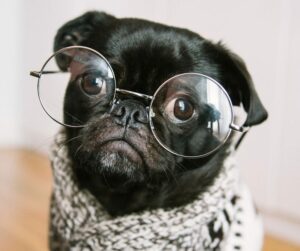
Debunking Myths About Dog Vision
Heres a few of the many myths about dog vision:
Are All Dogs Color Blind?
One common misconception is that dogs see the world in black and white. While dogs do have limited color vision, they are not entirely colorblind. They can perceive and differentiate between certain colors, particularly blues and yellows.
Understanding Red-Green Color Blindness
Dogs’ vision is often compared to red-green color blindness in humans, where red and green hues appear as shades of gray. This means that while dogs cannot see the full spectrum of colors, they still experience a colorful world, just in a different way.
Fun Facts About Dog Vision
Here are a few fun facts about the vision of your dog.
Dogs and TV Screens
Have you noticed your dog reacting to images on the TV? While dogs can see images on digital screens, their perception of these images may differ from ours due to the frame rate and color display. Nevertheless, some dogs enjoy watching TV, especially shows featuring other animals.
Dogs and Art
Some artists create pieces specifically designed for dogs, using blue and yellow colors to cater to their vision. These artworks aim to provide visual enrichment and stimulation for our canine companions.
The Canine Rainbow
While dogs may not see the same vibrant rainbow humans do, their ability to detect shades of blue and yellow adds a unique charm to their perception of the world. Imagine a world where the sky is always captivatingly blue, and a yellow toy is the ultimate prize.
Kate’s K9 Pet Care Services is here for all of your pet care needs. Contact us today!

Conclusion | What Colors Can Dogs See?
Understanding how dogs see the world can deepen the bond between you and your furry friend. By considering their unique color vision and visual capabilities, you can create a more engaging and enriching environment for your dog. Whether it’s choosing the right toys or improving training techniques, these insights can enhance your dog’s quality of life and your relationship with them.
Remember, while dogs may not see the world in the same vibrant colors we do, their perception is perfectly suited to their needs. Celebrate these differences and continue exploring ways to make life more exciting and enjoyable for your beloved canine companion.
If you enjoyed learning about how dogs see the world, consider sharing this knowledge with fellow dog owners. Let’s help our furry friends experience the world in the best way possible!



